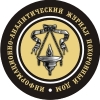Our 12th patient - we have cryonized a man from Kiev
The first KrioRus patient from Kiev (but not from tne Ukraine) died from stroke on May 5, 2010, at 7.40 (Moscow time). His relatives contacted us very quickly and at 8.40 we already consulted them. To our astonishment, at 9.30 the cryoconservation initiators – the patient’s daughter and the son-in-law - solved all the problems with other relatives and confirmed their readiness to make use of the KrioRus services.
At the time, the patient was at the mortuary of the medical emergency hospital.
The client wrote a letter of autopsy non-acception. By dinner time, they already got all the necessary documents.
Unfortunately, at the mortuary they dissaproved of the idea to cryonize the patient and were not willing to cooperate, but by that time we already were able to take him away from there.
Our company made all the necessary arrangements with the Kiev funeral parlour “Requiem” which consented to assist us in this case, particularly, to transport the body to Russia. By that time our Ukranian voluntary assistants had ordered ice which soon arrived and we transported the patient with accelerated cooling to another mortuary not far from the Southern railway station.
The patients body cooling was initiated rather early, the temperature at the mortuary, as you know, is about 3-5° C, and after 12 hours after his death his body was totally covered with the ice that had been brought there, which effectively prevented decomposition process. The fact is that that a recently deseased patient body covered with a reasonable amount of common ice (no more that 100-150 kg), does not freeze but is cooled down soon, and water layer formed between the body and ice prevents the tissues from freezing.
The local funeral parlor wanted to help us with perfusion, so Danila Medvedev immediately went to Kiev with a necessary amount of chemical agents. Then it seemed an optimal strategy to us: to wait for chemicals arrival and, as soon as Danila came, to start perfusion procedure.
But the situation developed in a quite unexpected way: the embalmer who previously had consented to perform perfusion, refused to do that. He was afraid that he will not cope with the procedure, as he was not skillful enough in the required arterial embalming similar to perfusion (he was an expert only in abdominal embalming). He told us that he could have done that if somebody at least once had performed the operation in his presence or demonstrated the procedure, but hesitated to try, even with our consulting from Moscow.
It was unwise to look for another loyal embalmer and we decided to transport the patient to Moscow: soon a car with the patient covered with ice in his coffin, started out for Moscow.
It took the car 17 hours to get to Moscow – somewhat longer than we expected, as the driver had some problems approaching Moscow because of the preparation for the Victory Day.
As soon as the car arived – it was at 12.00 on May 7- the events came thick and fast. Our perfusion experts demonstrated the best work as to speed and quality which I have so far witnessed in Russia.
The car arrived at 12.00, and at 12.40 the patient was already in an operating room (we had to unload ice, chemicals, to open the coffin, etc.). At 14.00 the perfusion system was already prepared for work and filled with perfusion solution and they started to connect it to viens. At 14.00 the perfusion procedure was initiated.
The blood-vascular system was in surprisingly good state – evidently, it was the effect of prompt and early cooling at the very beginning. That is why perfusion was completed in recordingly short time (as a rule, it is a rather prolonged procedure) – 6 hours and a half. At 22.00 on May 7, after perfusion we started coolong the patient in dry ice. Apropos, for the first time perfusion was carried out in a speciallly cooled room with the +1° C air temperature which also increases cryoconservation quality.
It should be mentioned that the situation was still far from being ideal, our work was complicated by the the patient remore location and the absence of a specialists in place, but it should be stressed that better resullts are usually achieved if a contract for cryoconservation is concluded in advance and a cryo company has a possibility to arrange the procedure with local experts or to train them, as well as to buy necessary equipment and chemical agents in place or to bring them. For example, in the US elederly cryopatients move to live nearer to the cryo storage repository by the end of their life.
Nevertheless, we are happy that one more patient has gotten a second chance for life. Moreover, we have analyzed the benefits and disadvantages of this case and are now developing a plan to improve the quality of services we render to our patients.
This patient is our 12th cryonized client and the 5th foreign citizen. Before that, we have cryonized Dutch and Estonian citizens, as well as two Ukranian citizens.










































